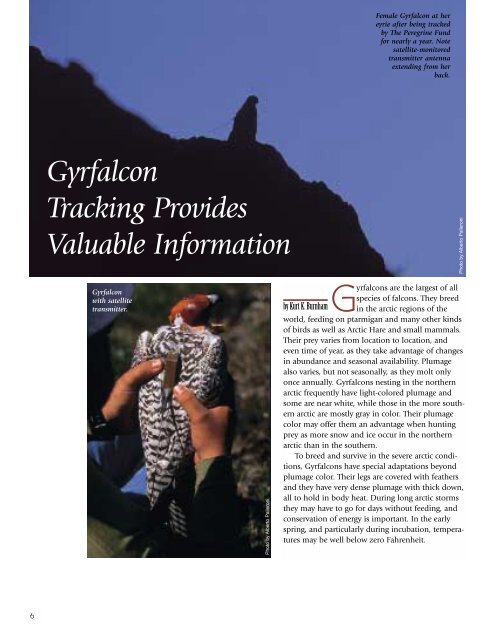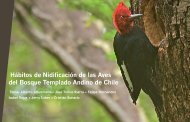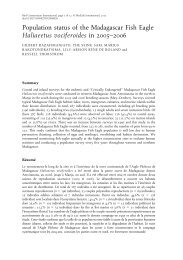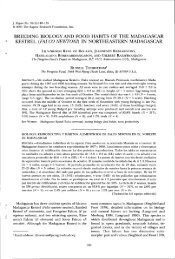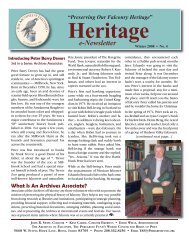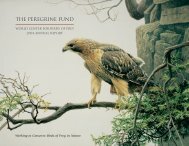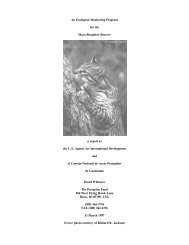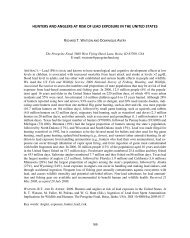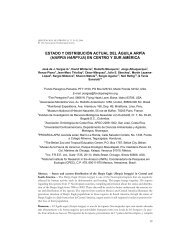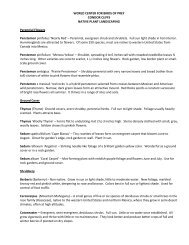2001 Newsletter - The Peregrine Fund
2001 Newsletter - The Peregrine Fund
2001 Newsletter - The Peregrine Fund
You also want an ePaper? Increase the reach of your titles
YUMPU automatically turns print PDFs into web optimized ePapers that Google loves.
Female Gyrfalcon at her<br />
eyrie after being tracked<br />
by <strong>The</strong> <strong>Peregrine</strong> <strong>Fund</strong><br />
for nearly a year. Note<br />
satellite-monitored<br />
transmitter antenna<br />
extending from her<br />
back.<br />
Gyrfalcon<br />
Tracking Provides<br />
Valuable Information<br />
Photo by Alberto Palleroni<br />
Gyrfalcon<br />
with satellite<br />
transmitter.<br />
Photo by Alberto Palleroni<br />
Gyrfalcons are the largest of all<br />
species of falcons. <strong>The</strong>y breed<br />
by Kurt K. Burnham in the arctic regions of the<br />
world, feeding on ptarmigan and many other kinds<br />
of birds as well as Arctic Hare and small mammals.<br />
<strong>The</strong>ir prey varies from location to location, and<br />
even time of year, as they take advantage of changes<br />
in abundance and seasonal availability. Plumage<br />
also varies, but not seasonally, as they molt only<br />
once annually. Gyrfalcons nesting in the northern<br />
arctic frequently have light-colored plumage and<br />
some are near white, while those in the more southern<br />
arctic are mostly gray in color. <strong>The</strong>ir plumage<br />
color may offer them an advantage when hunting<br />
prey as more snow and ice occur in the northern<br />
arctic than in the southern.<br />
To breed and survive in the severe arctic conditions,<br />
Gyrfalcons have special adaptations beyond<br />
plumage color. <strong>The</strong>ir legs are covered with feathers<br />
and they have very dense plumage with thick down,<br />
all to hold in body heat. During long arctic storms<br />
they may have to go for days without feeding, and<br />
conservation of energy is important. In the early<br />
spring, and particularly during incubation, temperatures<br />
may be well below zero Fahrenheit.<br />
6


